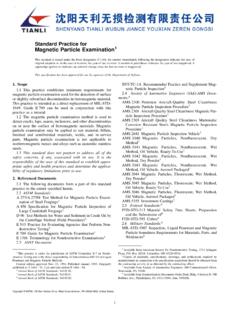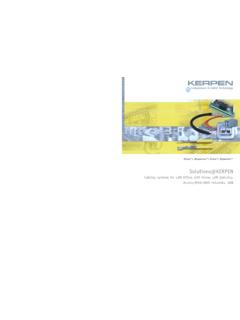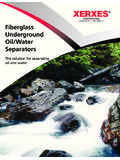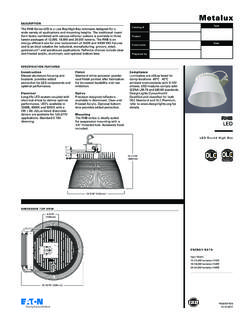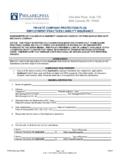Transcription of Schäfer + Peters GmbH
1 Sch fer + Peters GmbHTECHNICAL INFORMATIONFOR STAINLESS STEEL FASTENERS T a b l e o f c o n t e n t s I. DIN and ISO standards and what they mean a) The term standardisation b) The organisation and issuers of standards Tab. 1 The diversity of standards c) What does a DIN standard reveal? d) Properties of stainless steel screws at increased temperatures Tab. 2 An overview of changes to standards Tab. 3 Changes to hexagonal screws and nuts Tab. 4 Changes to the dimensions of hexagonal screws and nuts Tab. 5 Changes to small metric screws Tab.
2 6 Changes to pins and bolts Tab. 7 Changes to tapping screws Tab. 8 Changes to threaded pins Tab. 9 Technical terms of delivery and basic standards1 II. Mechanical properties of special-grade stainless steel a) The labelling system for the austenitic steel group according to ISO Tab. 10 Common stainless steels and their composition b) Classification of strength of stainless steel screws Tab. 11 Extract from DIN EN ISO 3506-1 c) Yield strength loads for shoulder studs Tab. 12 Yield strength loads for shoulder studs d) Properties of stainless steel screws at increased temperatures Tab.
3 13 Strength class 70 e) Reference values for tightening torques and their friction coefficients Tab. 14 Reference values for tightening torques Tab. 15 Friction coefficients G and K for screws made from stainless steel and anti-corrosion steel Tab. 16 Friction coefficients G and K for screws and nuts made from stainless steel and anti-corrosion steel f) Magnetic properties of austenitic stainless steel III. Corrosion resistance of special grade A2 and A4 stainless steel a) Extraneous rust and how it forms b) Stress corrosion c) Surface-eroding corrosion d) Localised corrosion e) Contact corrosion f) Corrosive media in the presence of A2 and A4 Tab.
4 17 Overview of the chemical resistance of A2 and A4 Tab. 18 Subdivision of level of resistance into various groups IV. Extract from building-authority approval from 20 April 2009 "Products, fasteners and parts made from stainless steels" - Subdivision of steel grades by strength class and corrosion resistance class - Material selection for atmospheric exposure Tab. 21 - Steel grades for fasteners with assignment to steel groups following DIN EN ISO 3506 Parts 1 and 2 and labelling following Section and maximum nominal diameter V.
5 Marking of stainless screws and nuts 1 I. DIN and ISO standards and what they mean a) The term standardisation When components are standardised they are easier to work with because such components are interchangeable. For this to be possible the fundamental characteristics of standard parts must be defined by a central body and used by manufacturers and retailers. b) The organisation and issuers of standards Tab. 1: The diversity of standards Standard Information DIN standard Issuer: Deutsches Institut f r Normung (German Institute for Standardisation) = national, German standard DIN standards are issued for electric components and organisational methods as well as fasteners.
6 DIN standards remain common in Germany even though the changeover to ISO standards is gaining pace. DIN standards will remain in place for parts which do not have ISO/EN standards or for which there is no need for standardisation. ISO standard Issuer: ISO (International Organization for Standardization). = international standard The term "ISO" comes from the Greek for "equal". ISO standards apply around the world and are therefore suited for world trade. Even though ISO standardisation is gaining in importance, the German DIN standard was a world leader in standardisation for a long time.
7 EN standard Issuer: European Committee for Standardization (CEN) = europ ische Norm (European standard) The idea behind the EN standard was to establish "equal" preconditions for trade within Europe. Unlike ISO standards , EN standards only apply within the European Union. The CEN endeavours to make EN and ISO standards the same. In principle existing ISO standards should be adopted unchanged as EN standards , retaining the same ISO standard number but starting with EN ISO. If this is not possible at European standardisation level, separate EN standards are produced with EN standard numbers different from the ISO numbers.
8 2 Continuation of Tab. 1: The diversity of standards Standard Information DIN EN standard = national German version of an EN standard adopted in unchanged form This is a combination of standards which indicates that the standard number ( 12345) identifies the same object both in the DIN standard and the EN standard. DIN EN ISO standard = national German version of an EN standard adopted in unchanged form This is a combination of standards which indicates that the standard number ( 12345) identifies the same object in the DIN standard, EN standard and ISO standard.
9 DIN ISO EN = national German version of an ISO standard adopted in unchanged form . c) What does a DIN standard reveal? Just like any other standard, the DIN standard delivers standardisation and simplicity. For example, for a query it would suffice to say "DIN 933, M12 x 40, A4-70" to define a multitude of features. This means that you don't always have to cross-check the requirements of a product and the customer can be sure that he or she receives precisely the goods they ordered. standards define at least one of the following features.
10 Head shape ( hexagon head, hexagonal socket, raised countersunk head) Type of thread ( standard metric ISO thread M, sheet metal thread) Thread length Thread pitch Material and strength class Possible coatings or strength characteristics b = thread length for screws whose thread does not extend to the head (partial thread screws) d = thread diameter in mm e = corner measurement on head k = height of head I = nominal length of screw this also indicates how the length of a screw is measured. S = width across flats 3 The example below should explain what the following details mean: DIN 931 = hexagonal screw with shoulder M = metric ISO thread 12 = thread diameter of screw of 12 mm X 40 = nominal length in mm A4 = material class, stainless steel A4 - 70 = strength class 70 P = the thread pitch is stated by a number.




